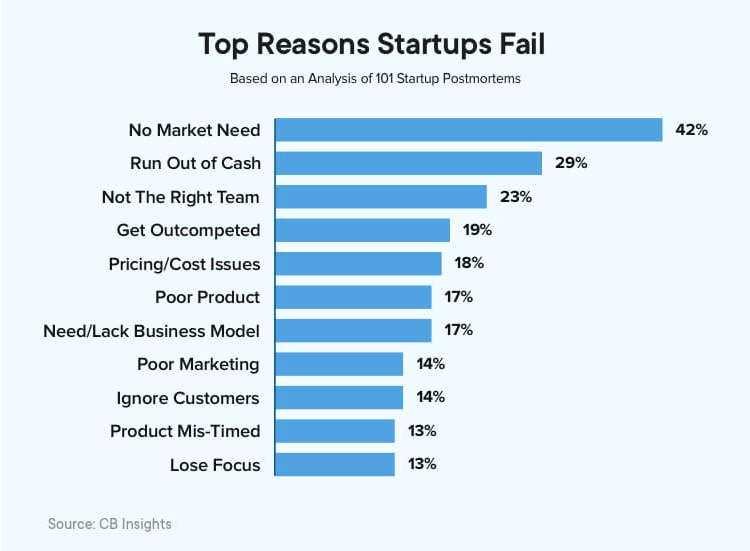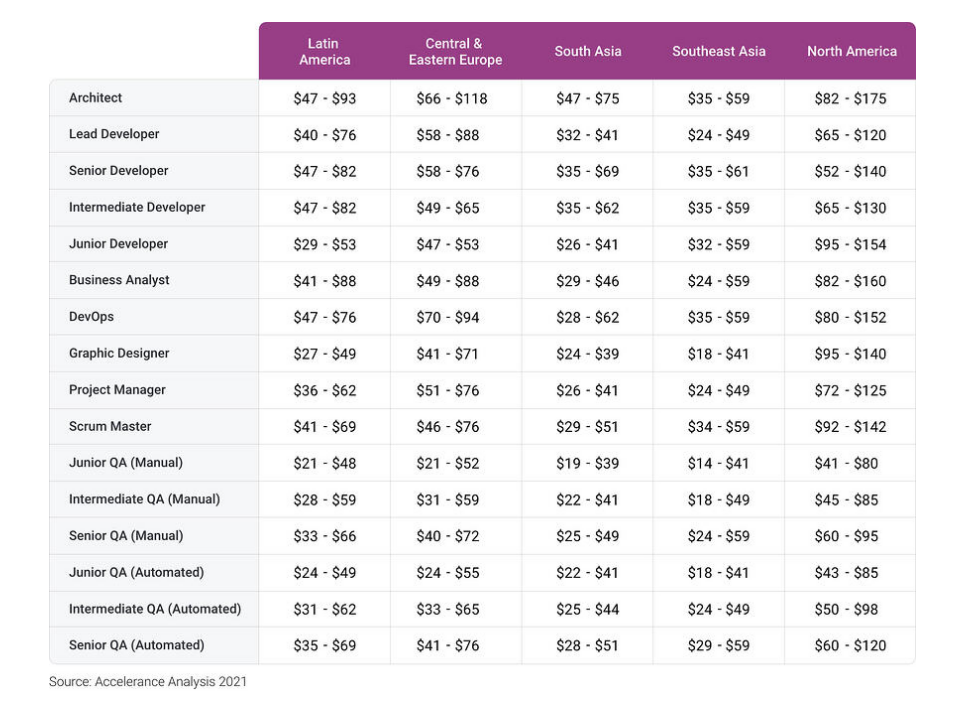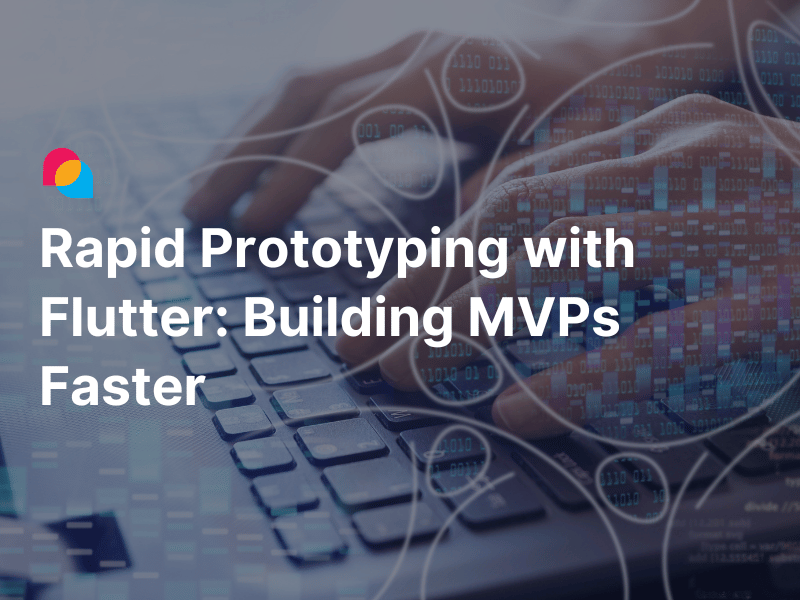The increasing market competition, advancements in technology, and growing customer demands have been driving numerous startups to develop products efficiently and cost-effectively. Fortunately, you can achieve this when building a minimal viable product (MVP). In an MVP experiment, you can create the simplest product version using the smallest amount of resources to get valuable feedback from early adopters. Thus, startup founders can reach the market faster, saving on time, expenses, and resources before going into full development. From Facebook, Uber, to Amazon, these platform giants have seemingly transformed their small and simple ideas into major worldwide brands.
While an MVP helps to minimize costs significantly, building an MVP as the real product also incurs a high cost for businesses for different reasons. The point here is, how do you ensure that your MPV development strategy is truly cost-effective?
This article will cover key factors influencing MVP development costs and why startup founders should seriously plan the budget before building an MVP. We also highlight some helpful tips to reduce software development costs without scarifying the quality of your future product.
Why should you seriously plan the MVP development cost
Before exploring factors influencing the MVP app costs and how to reduce the expenditure of building the MVP, it's worth looking at why planning MPV cost is such an important task.
A study from CB Insights found that running out of cash (29%) is one of two main reasons for startup failures and the projects can not get off the ground.

Source: The Top 12 Reasons Startups Fail, www.cbinsights.com
Via this figure, what seems obvious turns out to be highly significant. Thus, the budget and software development costs need planning seriously. Here are several benefits alongside an effective budget plan:
- Resource Allocation: Ensures resources align with the predefined budget.
- Cost Tracking: Allows accurate measurement and control over development expenses.
- Financial Roadmap: Supports short-term savings and long-term financial planning.
- Informed Decisions: Improves decision-making across the business.
- Investor Attraction: Strengthens your position when seeking investor funding.
How to Estimate MVP Development Costs
When it comes to the costs associated with MVP development, every software agency will provide you different estimates. The following factors can make a tremendous difference in proposed prices.
- Type of development team (In-house vs. outsourced)
- Hourly payment rate
- Scope of Work and Core Features
- Technology Stack Choices
- Type of contract (Fixed Price, Time & Materials, Dedicated Team)
Let’s take a closer look at them!
Type of development team
The type of development team is the first factor affecting calculating the MVP costs. There are multiple ways to build an MVP for your startup — building an in-house team, hiring a software development outsourcing company, hiring a freelancer, and so on. Every option requires an investment of time and money. In this section, we will focus on two main types of development teams: In-house vs. Outsourced.
In-house development lets your own team be fully involved in the project. It also provides transparent relations and clear communication. The quality is still your responsibility. Your developers are more motivated by the success of the application. However, the main disadvantage of this option is significantly higher cost. When you are employing full-time developers, you are required to pay hiring costs as well as many other expenses. The bigger the team becomes, the higher MVP development cost would be. It could be a problem if you start with a limited budget. It's also challenging for recruiters to find the right talent, especially since the pandemic struck a blow to employment in most sectors. The IT industry is quickly rebounding, and the demand for technical expertise in the United States or Australia continues to outstrip supply.
Lower costs are something that inherently follows with offshore and nearshore outsourcing. In a globalized world, software outsourcing allows you to tap the expertise of a broad range of programmers to develop your software products. Compared to in-house staffing, the overall cost of engagement may be lowered by up to 30 percent. The majority of the savings come from lower overhead costs like rent, office equipment, and employee benefits. Given this lower cost, it allows you to reinvest in your company, develop new software, and avoid negative cash flows.
Once you find the ideal software vendor, share your business requirements and budget expenditure with your partner while having a well-thought-out discussion. Their experience building MVPs and software development will complement your plan with valuable feedback on the development process, making your estimation more precise and reasonable.
Hourly rate
Hourly rate is the second factor affecting MVP costs. Its key advantage is that you only pay for what you get. But what makes the rates so different? They depend on two aspects: location and experience/expertise.
Location
Both development teams and freelancers have varying salaries in different countries, so you should research before the collaboration.
In a recent report by Accelerance, they reported average hourly rates for different regions for software development outsourcing as below:

Source: RATES, TRENDS, AND EXPERT PREDICTIONS: Accelerance Releases its 2021-2022 Global Software Outsourcing Trends and Rates Guide, www.accelerance.com
In the United States, most startups are unable to compete with large, high-status businesses for the same talent pool. The question is whether you can attract the best engineers there and afford to pay what they demand. Instead of spending several weeks or months finding the best full-stack developers in the U.S., you can make the most of nearshore outsourcing in Eastern Europe or offshore software development in Asia to access resources at an equivalent standard of skills and expertise. The hourly rate here is substantially lower, probably $50-$55 per hour instead of costing $100 per hour in the U.S. As a result, rather than considering developers from your country only, hiring outsourced developers helps you save time and money significantly, as well as reduce overheads. If you are comfortable working across time zones and acquiring budget strains, outsourcing would be the right choice for you.
Experience & Expertise
These aspects will also influence your outsourcing team's hourly pricing. Developers can be divided into three groups based on their experience:
- Junior (<1 year of experience)
- Middle (1-3+ years of experience)
- Senior (5+ years of experience)
If you require specific expertise, the price may increase somewhat. However, don't define developer quality by technical skill and experience alone. Let's consider how a team can learn, work collaboratively, communicate effectively as well as fit into your company's culture and values. Likewise, innovation focus, motivating leadership, and good hiring standards should be part of your overall assessment criteria. Ultimately, evaluating potential outsourcing partners to build your high-quality product at a reasonable price is critical to your business's success.
Read also: 14 Insights into Vietnam Outsourcing Software Development.
Scope of work
The most substantial factor determining the cost to create an MVP is the workload volume since this aspect covers the application's core functionality. In addition, it is also necessary to analyze the complexity of implementing an app. Since then, you can calculate the possible amount of work that can cover development stages, UI/UX design, quality assurance (QA), and more.
As mentioned in our previous article, How to build an efficient Minimal Viable Product (MVP) for startups, an MVP should be composed of 3 critical attributes: the M - minimal, the V - viable, and the C - competitive. To build an efficient MVP, while scoping the workload in your project, you consider achieving all those things in one process. Besides, it should be noted that user interface (UI), animations, and custom illustrations are critical parts of estimating the MVP cost. They should be simple, easy to understand, stable, straightforward to navigate, and keep users engaged. It also makes sure a better user experience (UX) and creates your unique selling point. Additionally, QA is an integral part of a software development process. Testers develop the software QA plan, consisting of the procedures, techniques, and tools employed for testing. It's used to ensure that every detail is implemented correctly, each step is executed in the right order, and the overall procedures are consistent. This enables you to avoid technical debt, align the product closely with the requirements defined in the SRS (software requirement specification) and ship the high-quality software to the market.
Read also: How to write a practical “Agile” software product specification for startups.
Technology stack
The next factor that involves MVP costs is the tech stack. It is a set of tools, programming languages, frameworks for coding front-end and back-end, as well as other components of the application environment. It directly has an impact on the application's user experience, performance, and even architecture. Using the right technology lets you easily maintain a quick pace of corrections from early adopters’ insights and save time on shipping products to the market on time. It also allows developers to avoid unexpected breaking changes that might affect a particular module or entire app architecture.
A hybrid or native development technology stack would help develop websites and apps cost-effectively. Earlier, software developers often used native codes within the hybrid environment to implement features that are only available through native development. However, this turned out to be a long process to enhance the user experience. The best choice is to adopt hybrid apps which enable developers to quickly deploy easily and leverage high-quality features with less development time.
Choosing a niche tech stack is so challenging when numerous tools and technologies are now available. If done right, it will provide high performance, smooth scalability, and a pleasant user experience. If done wrong, it might result in financial losses from architectural re-designs.
Type of contract
When it comes to the billing contract, understanding cost and duration is critical in making strategic business decisions. Whether you're building a startup, realizing a new business opportunity, or maximizing your business efficiency, choosing the right contract enables you to balance the risk and reward for your business. It also lays the foundations for a successful outcome and makes sure you're getting the most value for your investment. Three common types of contracts include software development outsourcing: Fixed Price, Time and Materials, and Dedicated Team.
In our previous article, How to choose the best pricing models for software outsourcing projects, we went into all three engagement models that deliver maximum value for outsourced projects. We also covered common use cases and shared how we support our clients to assess the best model suited for their needs.
To explore more on how to estimate the cost of custom software development as well, you can read: How to estimate the cost of custom software development reasonably.
How to reduce software development costs for your MVP
Prioritize and start with key features
First, one of the most critical tips is to list and prioritize the key features for each stage of a user's journey. Before building an MVP, you need to form a product hypothesis and then validate them by interviewing potential customers. You will clearly understand what your users want and how well your product aligns with the market demand. These interviews also help you quickly organize and prioritize features in categories like "must-have", and "nice-to-have". Since then, ask questions to yourself like:
- What do you want your end-users to achieve with the product?
- What features need to be included to make the product more attractive and efficient in its final version?
- What features are your unique selling point?
This will limit wasting resources and lessen the chance of failure for your business.
Choose cross-platform development
Second, if you want to launch a mobile application, you can consider cross-platform development as a great way to cut down on software development costs. In native app development, software developers have to write two separate codebases for each platform, iOS or Android. While in cross-platform development, they only build one app that runs on both.
Some business owners are afraid of lowering their product quality when using the cross-platform option. It could be the case almost five years ago. Compared to native smartphone solutions, cross-platform apps decreased performance and didn't bring a great user experience. However, with current technological innovation, many available frameworks like Flutter that help software companies build a single app running on different platforms faster and with much less effort. This also enables you to reduce not only development costs but also maintenance costs and resources. If you need to make any changes to your application, you only need to modify one codebase.
Read also: Why should startups consider Flutter for cross-platform app development.
Adopt a suitable project management approach
Next, to ensure an effective development process and keep MVP's development costs under control, you need to choose the project management approach that best suits your project. There are some common methodologies widely used, like Agile and Waterfall. Nevertheless, Waterfall often causes an increased time to the market, involves higher amounts of risk and uncertainty for your product, and cannot accommodate changing requirements during the life cycle. Meanwhile, Agile is an iterative approach, including several smaller cycles – Sprints. It also allows you to offer project flexibility, bring down costs and time of development, as well as focus on getting a return on investment faster. Therefore, before deciding the project management strategy for your project, let's examine each approach's principles and main aspects to define which one best fits your needs.
At Enlab Software, we adopt Agile to set up effective cooperation with the client and improve time-to-market. Dividing the process into short-term iterations, we manage to deliver new functionality every 2-4 weeks. At the end of each phase, our software engineers would show the outcome to the client. This helps our client directly control software project development and easily alters the requirement just in case. Consequently, the client gets the app or website that fully meets business requirements much faster.

Use continuous integration and continuous deployment
Another tip is to leverage a CI/CD pipeline that can help you reduce software development costs and time while getting a higher quality product. Because of rapid code updates and error detection, the CI/CD helps programmers automate the process of building, deploying and testing the app. Therefore, software developers almost immediately detect and fix bugs. Software service providers who use the CI/CD pipeline can accelerate the process of product updates. Every change in the code passes automated tests to assemble builds. Then, they are deployed to production (release stage) through numerous steps. This approach enables you to improve time-to-market, cut down expenses, and enhance software quality.
Start testing early
To avoid shipping a glitchy product to the market, you should start testing it early in the software development process. By engaging quality assurance (QA) specialists at the early stages of your MVP development, you can significantly cut software development costs. They will implement regular tests throughout the development lifecycle to discover and fix issues before moving on to other parts of the project. Otherwise, you can risk accumulating bugs, which will entail extra hours of rework, require more time in bug fixing, lead to project delays, and involve additional costs.
Choose a partner with a trusted IT service provider
Last but not least, it would be best if you considered partnering with a trusted contractor to help you address your business matters. Otherwise, an unreliable software provider likely overcharges you and provides a poor-quality product. It means your product will acquire multiple bugs, slow page load speed, and performance issues. Some system parts don't work as expected in the worst case while you have wasted several months and thousands of dollars.
We recommend checking out the company's profiles on B2B review and rating platforms like Clutch. Here, you will find client testimonials, portfolios in previous projects, different business domains, and lists of the best firms in various categories. It’s essential to ensure they have experience in building MVPs in cooperating with startups. In addition, you can request them to consult on your bespoke software solution to learn more and compare it to other vendors. Especially when you choose an offshore software development company, it may be challenging to control the quality of building software. Let's ensure workflow transparency, from frequent meetings to constant reporting.
Read also: Effective Software Outsourcing Screening Agenda for SMEs and Startups.
The risks of sacrificing quality for cost
Software development costs vary since they depend on multiple factors, from the scope of work to the technologies used. When you decide to outsource, it makes sense you aim for the best price that suits your budget. Even though there are different outsourcing rates available in the market, choosing to outsource too cheaply is also a common pitfall.
According to Martin Fowler, there are two types of software quality attributes: external quality (UI/UX design and defects) and internal quality (codebase and architecture). The difference is that your customers can only see what makes a software product with high external quality without differentiating how good the internal quality is. Apart from developing elegant user interfaces and not having any defects, you and your development team need to focus on building internal source code neatly organized and architected. It allows you to examine how your application works, add new features easily, and avoid technical debt later. Every time the technical debt is incurred, you will spend more resources detecting and fixing bugs. As a result, you can't yield a high-quality product to ship to the market.
In a nutshell, it's essential to balance the cost without sacrificing the product's quality. Otherwise, the cost versus quality tradeoff is inevitable.
Final thoughts,
Now you have discovered factors affecting costs to build an MVP for startups. It would be best if you found a balance between quality and pricing that works for you. Though there are numerous ways to reduce the MVP costs, what I described above are some tips for your reference. It may seem logical that lower prices may result in a low-quality software product. However, if you follow these best practices before building an MVP, you can create a high-quality product that delivers real value to users without exceeding your budget.
References
- CB Insights, The Top 12 Reasons Startups Fail, www.cbinsights.com, 2021.
- Accelerance Research Team, RATES, TRENDS, AND EXPERT PREDICTIONS: Accelerance Releases its 2021-2022 Global Software Outsourcing Trends and Rates Guide, www.accelerance.com, 2021.
- Rich Wanden, The True Costs of Offshore Software Outsourcing (and Why It’s Much Less Than You Think), www.accelerance.com, 2021.
- Martin Fowler, Is High-Quality Software Worth the Cost?, www.martinfowler.com, 2019.





